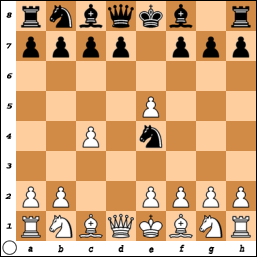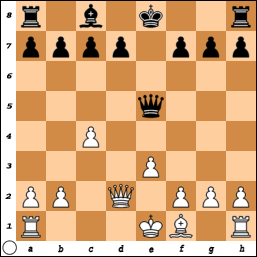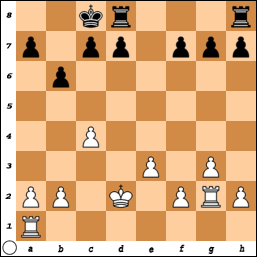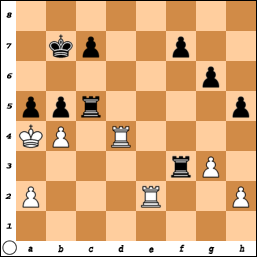In the 2020 annual edition of Atlantic Chess News, Pete Tamburro analyzes my game against Christopher Potts. [All notes by Pete Tamburro.]
* * * * * * * *
Round One: Budapest Gambit, Fajarowicz Variation
Christopher Potts (USCF 1957) - Jim West (USCF 2203), Parsippany NJ 2/16/2019
Oh, my dear does this game bring up memories! Back in 1964, at the NJ Open, I was playing against Arthur Bisguier in a simul. I played the Budapest against him - you know, to play something he wasn't used to seeing - and he came to the board and looked at me and said with a big grin, "You play THIS against ME!?" Little did I know that he was the foremost expert on the opening. I got crushed like a bug with a system that was simple and strong. I then switched to the Fajarowicz line with 3...Ne4 rather than the normal 3...Ng4 and even beat a master with it. It's nice to see NM West still plays it after all these years.
1.d4 Nf6 2.c4 e5 3.dxe5 Ne4
4.Nf3
I gave up the Fajarowicz because of s simple idea: 4.a3! Even Bisguier started playing that as White!
4...Nc6
a) There is much mischief in 4...b6!? 5.Qd5 Nc5 (5...Bb7 6.Qxb7 Nc6 7.Nc3 Nc5 8.Bg5+/-) 6.Nf3 (6.Qxa8 Bb7 7.Qxa7 Nc6 8.Qxb7 Nxb7) Bb7 7.Qd1 Nc6 8.b4 Ne6 9.Bb2;
b) The quirky queen move can be met calmly: 4...Qh4 5.g3 Qh5 6.Bb2 Qxe5 7.Nf3 Qh5 8.Nd4 Nf6 9.Nc3+/-.
5.Nc3 d6 6.Qc2 d5 7.e3 Bg4 8.cxd5 Qxd5 9.Bc4 Qa5+ 10.b4! Bxb4+ 11.axb4 Qxa1 12.Qxe4 Bh5 13.e6!+/-, Bisguier-Ljubojevic, Malaga 1971, 1-0 in 35.
4...Bb4+
Your annotator feels obligated to the initiated to present this tricky old trap (it's amazing how many people fall into it):
4...d6 5.cxd6 Bxd6 6.g3 Nxf2! 7.Kxf2 Bxg3+ 8.Kxg3 Qxd1.
5.Nbd2 Nc6 6.e3 Qe7 7.Qc2 Nxd2 8.Bxd2 Bxd2+ 9.Qxd2 Nxe5 10.Nxe5 Qxe5
If White doesn't know the critical lines, then the nice thing about the Faj is that equality comes easily. In this position, White can castle queenside right now or play 11.Be2 and then castle kingside with complete equality. However, things go horribly wrong, starting with what looks like an additional guarantee of equality.
11.Qd4 Qa5+ 12.Qd2 Qxd2+ 13.Kxd2
So far, so good. Nothing is going on here. Where should we go for dinner?
13...b6 14.g3 Bg7 15.Rg1 O-O-O 16.Bg2?
The first step to perdition.
16...Bxg2 17.Rxg2
When you have fianchettoed your rook, something has started to go wrong.
17...d5!
People with a Budapest Gambiteer's attitude will always find a way to attack the king.
18.cxd5 Rxd5+ 19.Kc2
Another step towards Troubletown. Awkward but defendable was 19.Ke1 Rhd8 20.f4.
19...Rhd8
Who's your daddy now, d2 square?
20.f3?
A demoralizing defense was 20.Re1 Rc5+ 21.Kb1 Rd2 22.Rc1 Rxc1+ 23.Kxc1 Re2, but a decent chess player wins this every time as Black.
20...Rc5+ 21.Kb3 Rd3+ 22.Kb4 a5+ 23.Ka4 Rxe3 24.Rd1 Kb7 25.b3 Rxf3 26.Re2 h5 27.Rd4 g6 28.b4 b5+
This is a delightful and appropriate way to end it all. Black gambits a pawn for mate next move. Now you know why a lot of 1920s masters played 1.d4 Nf6 2.Nf3!
0-1










































